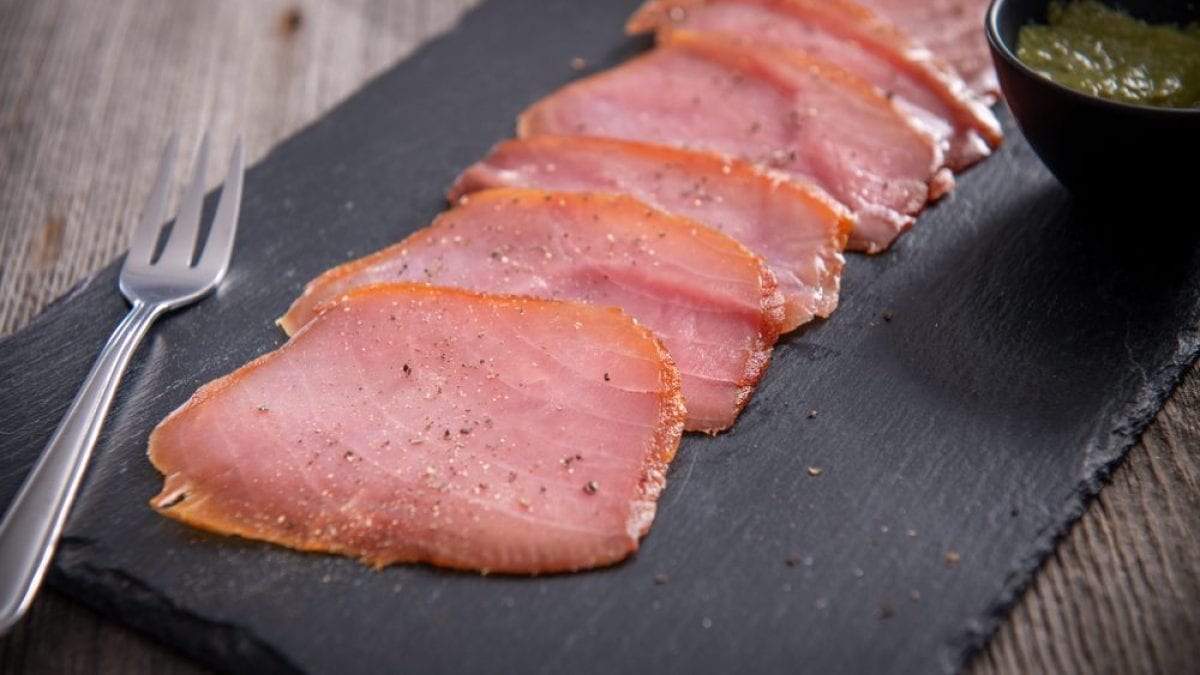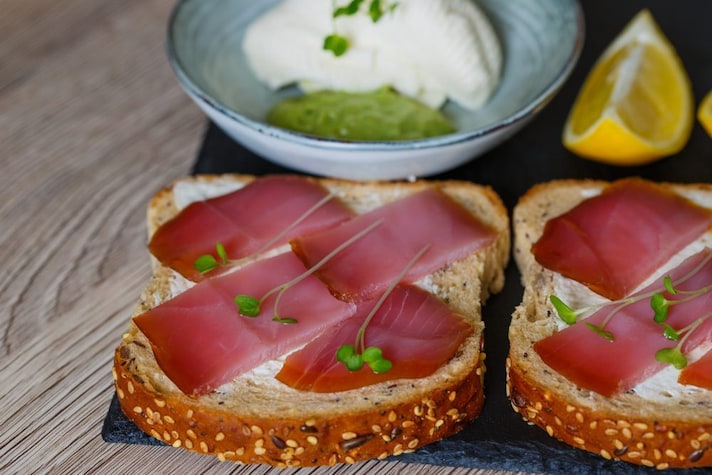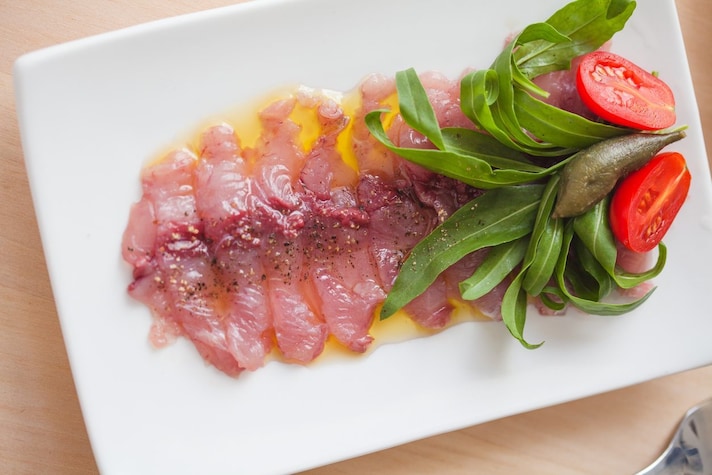
Cured meats are one of the most beloved products of our culinary tradition: made with meat, primarily pork, they are the star of sandwiches and platters and are often used in numerous recipes or eaten on their own. But did you know that there is another type of cured meat, much less well-known and equally delicious? We are talking about seafood cured meats: the name, in this case, is not misleading, because they are actually fish products that are treated with the classic techniques used in traditional cured meats, such as drying, smoking, curing, and salting. Seafood cured meats, just like meat-based ones, are products with a unique flavor and a delicious alternative to traditional cured meats.
What Cured Seafoods Are There?
Tuna, trout, swordfish, and squid: these are some of the fish used to make cured meats. Their production and consumption was initially largely tied to cities where fishing was the main industry. Today, however, they are enjoying a growing popularity among chefs and connoisseurs, thanks to the perfect combination of the flavor of the sea and the typical saltiness of cured meats.
1. Smoked Trout
This is a cold-smoked salmon trout seasoned with berries and aromatic herbs: its color is reminiscent of salmon, its meat is generally lean, and its flavor is enhanced by the smoking process. It is a typical cured meat from the municipality of San Daniele del Friuli (the same area as prosciutto crudo) and, for this reason, it is also known as Regina di San Daniele.
2. Trout Salami
Milanese? Neapolitan? Hungarian? No, trout. We're clearly talking about salami, and this variety is produced primarily in Piedmont: in this case, the trout meat is diced and processed with a blend of spices and aromatic herbs to create a true salami, then steamed and smoked. Today, it's even listed in the Atlas of Typical Products of the National Institute of Rural Sociology.

3. Tuna Bresaola
Also known as musciame or mosciame, tuna bresaola is a traditional specialty born during the Arab domination and particularly typical of the cities of Liguria, Sardinia, and Sicily. It is made using the upper belly parts of the bluefin tuna, which are then salted and dried in the open air or in the oven. In some versions, it is also thinly sliced and preserved in oil. It is a key part of our gastronomic history, so much so that it is included on the list of Traditional Italian Agri-food Products.
4. Tuna's Ficazza
Perhaps this one is a little better known, especially on the islands of Trapani and Favignana where it is produced: ficazza is a type of seafood salami made with tuna, which, in this case, follows the same "nothing goes to waste" principle used for pork. This is because it is made with the less valuable parts of this fish: the meat attached to the bone is added to the so-called busunagghia, the fatty part left near the belly, as well as the pulp on the back and some internal organs. The meat is minced and seasoned with salt, pepper, and sometimes fennel seeds: everything is then enclosed in a pig's intestine and left to dry for twenty days on wooden boards in ventilated rooms. It is usually served and eaten in slices, just like salami, to which a few drops of lemon juice may be added.

5. Smoked Fillet and Roast Beef
Another great and beloved fish product that can be made into a delicious cured meat: swordfish, which is processed in two ways. The first involves deboning and then smoking the fish flesh over beech or oak wood. This is then salted and cured, which can last several months.
As for the second, we're not talking about a true cured meat, but rather a cooking method reminiscent of roast beef. In this case, a 1-2 kilo cut is usually used, cooked very slowly so that the meat remains tender inside and a slightly crispy crust forms on the outside.
6. Seafood Mortadella
Visually identical to the classic mortadella Bolognese, the seafood version is made using parts of yellowfin tuna, squid, and swordfish, which are minced and then combined with herbs, salt, pepper, and pistachios. Before being cooked very slowly, it is given the classic cylindrical shape that gives it the appearance of a mortadella in every way.
Are Seafood Cured Meats Better Than Meat Ones?
To conclude this article, we want to sum up and understand whether seafood cured meats are better or worse than meat ones. The answer is: it depends. This way of processing fish certainly extends its shelf life —thanks to the treatments it undergoes—for a fresh product that is usually subject to rapid spoilage. Furthermore, compared to meat cured meats, fish cured meats are rich in omega-3s and low in fat and cholesterol, thus maintaining the characteristics of this special food.

That said, however, a small point must be made regarding the disadvantages: seafood cured meats, being processed using certain techniques, are not recommended for those suffering from hypertension, as they are high in salt, and are also higher in calories and less filling than their fresh counterparts.
Therefore, seafood cured meats are a product that can certainly be included in our diet, in moderation, to add a touch of flavor and a variation on the usual fresh fish. It's important, however, to pay attention to quantities and avoid consuming both meat and fish cured meats in the same week, but rather opt for just one of the two.
;Resize,width=767;)
